Published in the March 2012 issue of a“Die Porsche Kassette”

What a difference a year makes!
If you’ve read the previous two Chronicles you’ll know what my car now has: an Accusump!
An Accusump is an aluminum cylinder which can hold 2 or 3 quarts of engine oil under pressure. It gets connected to the engine’s oil supply via a high-pressure oil hose. Between the Accusump and the engine there’s an electric valve and a pressure switch.
When the engine is running the Accusump starts accumulating oil until it is full and holds the oil at the highest pressure the engine generated.
Now, when the engine’s oil pressure drops below 35 psi, the pressure switch opens the electric valve and the Accusump sends the accumulated oil under pressure back to the engine.
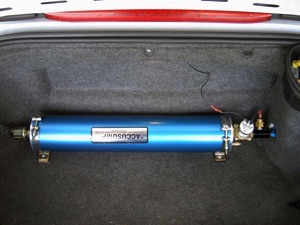
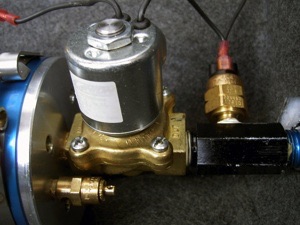
But why do such a convoluted installation?
Well, Boxsters and Caymans in particular, when fitted with racing tires, can generate such high lateral G-force in the turns that the oil inside the engine creeps up the walls of the oil pan and the pump sucks air! This is not good; having an engine running at 7,000 RPM with no oil pressure. And that is precisely what had happened to me last year, when piston rod number 6 let go because of overheating due to oil starvation.
Because the Boxster doesn’t have an oil pressure gauge and because you can’t see what’s going on inside the Accusump, to determine if it’s working properly or not, I also installed a set of gauges: One oil pressure gauge for the engine oil (right), one oil pressure gauge for the Accusump (left - which was probably overkill, but looks good) and one oil temperature gauge (center).
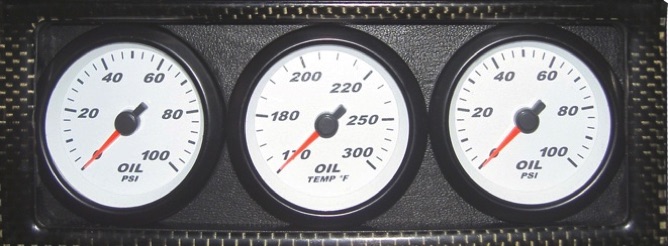
I also installed an onboard HD video camera to be able to study the oil pressure during a track event. The next 2 photos were captured from the video during a Super Solo run at the 48 Hours of Sebring 2012.
Turn 13 and turn 17 are both high G-Force turns where you can see the engine oil pressure has dropped and has kicked in the Accusump so there is always positive oil pressure throughout the turn. Watching at the video, there’s not a single moment, during 10 hard laps at Sebring where the engine pressure drops below 30 psi.
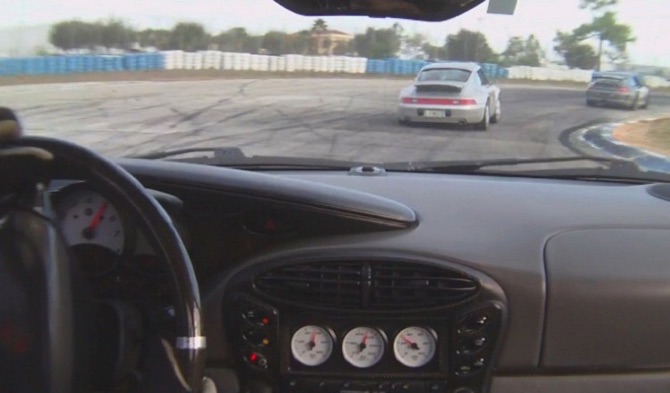
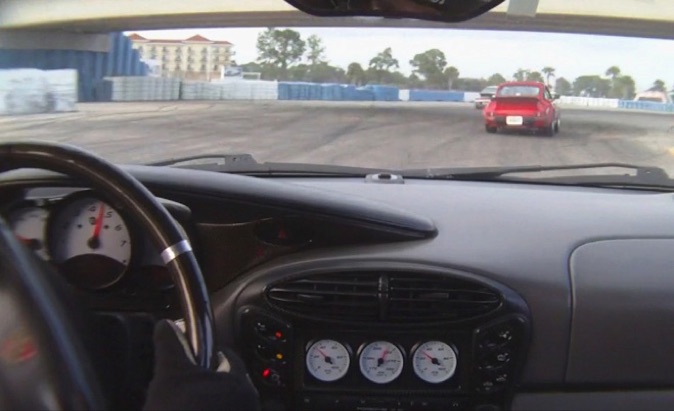
The other gizmo I installed since my last track outing is the IMS Guardian in order to avoid a catastrophic engine failure. The IMSG is a chip detector which triggers a visual and audible alarm if it detects ferrous metal in the engine’s oil sump, giving the driver plenty of warning time before catastrophic engine failure occurs due to an intermediate shaft bearing or other which has started to shed metal.
You can see the amber light just left of the center gauges. When all is well, the IMSG’s light remains amber. If the alarm is triggered the light turns red and a loud beep is sounded. I also rigged it to trigger a larger and more visible unused “idiot light” in the dash, if it ever goes off. I can’t depend on my hearing with my helmet on and all the cabin noise.
This Sebring outing was one of the best I’ve experienced, although it didn’t start out that way. Prior to our event, INDY cars had been testing at the track. When we made our first run, many of us thought that we’d had a flat tire, especially coming out of the hairpin (turn 7). Our car would loose traction and slide left, as we were making the right-hand turn and at the same time we’d hear and see chunks of tire material coming off the left rear tire. The funny thing was that by the time we’d get to turn 10, another righthander, things would be OK. It turned out that the tires that the INDY cars had been using laid down so much soft rubber on the track that our hot tires would pick it up and then release it on the hard turns. We took enough material off the inside of the rears to make grapefruit-sized balls of rubber from each tire after the first three or four sessions
.
On several occasions I also thought that my car had brake fade going into turn 7. It turned out that it wasn’t brake fade, but rather that the car was sliding into the turn on the soft rubber layer that was present (picture below). A very weird sensation to say the least. But after a couple of days of “cleaning” the track, it became very good, to the point that on Saturday (the 48 Hours Club Race is Thursday through Sunday) I was able to set my personal best time ever!
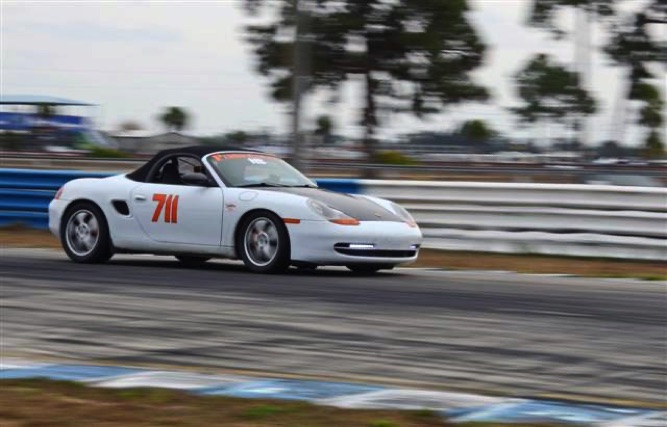
I had said before that Sebring hated my car.
I don’t think that’s the case.
I just hadn’t prepped enough in order to successfully handle the difficulties of one of the most tough and legendary road courses in the world: Sebring International Raceway.
Can’t wait for later in the year when I get to tackle it again!
For more information on any of my modifications and more, please visit my website at: www.PedrosGarage.com.
Happy Porscheing
© 2012 Technolab / PedrosGarage.com


